• Saturday, November 14th, 2009
The Central Florida Bonsai Club’s program for November was, “How to Photograph Bonsai” and I got to do the photoshoot for the club. I don’t know how many pictures I took, but it was pretty much non stop for hours. While I was doing the photos I was able to slip in one of my trees.
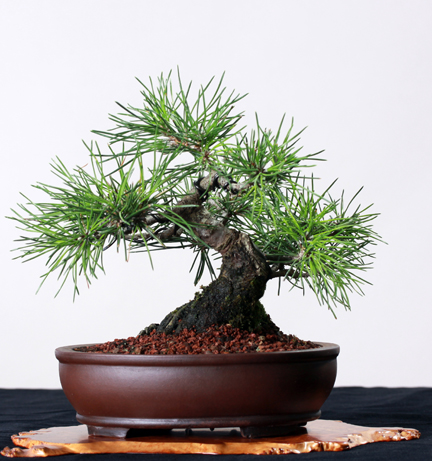
Shohin Blackpine

 Share on Facebook
Share on Facebook
• Sunday, November 08th, 2009
Recently I was interviewed by Dick Miller of Gulfstream Tropical Bonsai Journal for the Winter issue of the magazine. It’s always nice to get an oppportunity to tell a little bit about yourself in a publication such as this. Below are thumbnails of the pages, but to read to actual article you’ll have to click on the pages to view it on their website (Password: Tropical)
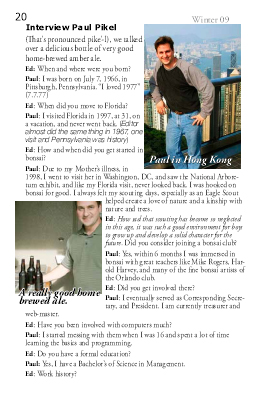
Interview Page 1
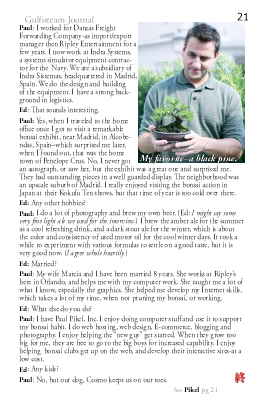
Interview Page 2
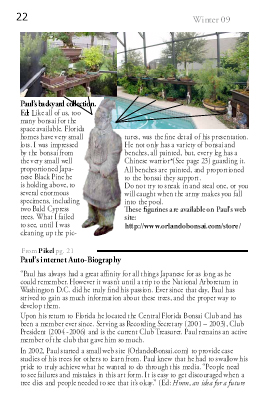
Interview Page 3
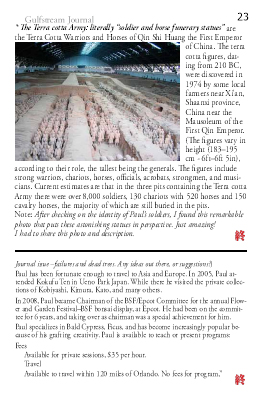
Interview Page 4

 Share on Facebook
Share on Facebook
• Saturday, October 31st, 2009
Sometimes it’s hard to represent nature in a bonsai due to un-natural cuts. However with a little work you can create dramatic aging of your trees to look very natural. My Blue Alps Juniper had a lot of branches removed with the thoughts of adding jins to help with the over all look of the finished bonsai. I really enjoy the color contrast of the reddish bark, bluish foliage and the white jins.
I had removed these branches last year, so the wood was completely dried, and ready for carving. The following images represent the before and after carving. Please keep in mind that Lime Sulfur will be applied after the final carving to bleach the wood white. I used a Dremel tool for the carving and sanding of the jins.
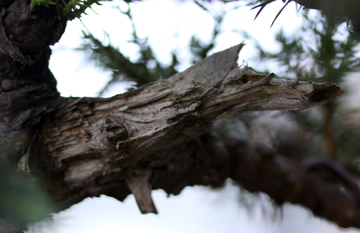
Jin #1 before
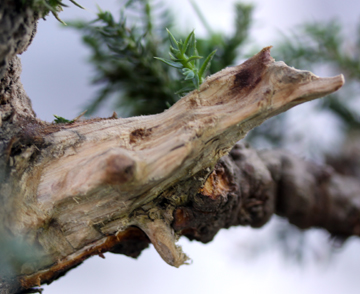
Jin #1 After
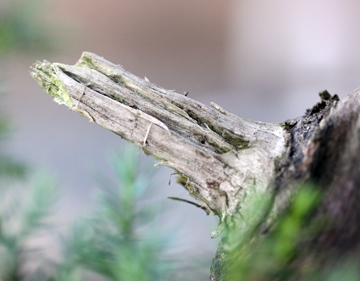
Jin #2 before
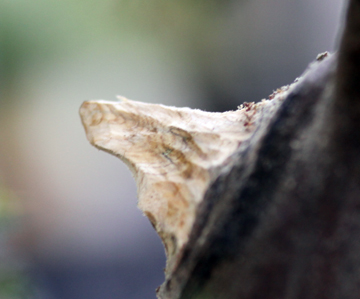
Jin #2 after

Jin #3 before
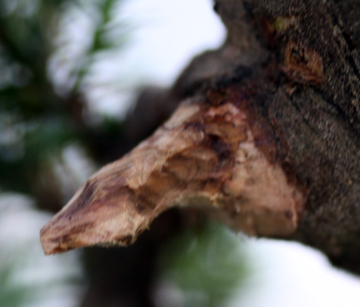
Jin #3 after

 Share on Facebook
Share on Facebook
• Saturday, October 24th, 2009
After consulting with a few other bonsai artist, in particular Mike Rogers. I found that the pot that this tree was potted in was too “Heavy” mass-wise for the tree. In Bonsai, everything is about perspectives and relationships. The overall height of a tree, is six times the width of the trunk at the base of the tree. The first branch should be located one third of the overall height of the tree. The width of the bonsai pot should be two thirds the height of the overall tree. The depth of the pot should be no more than then the thickness of the trunk.
I know that this seems to be a lot of math for such an artform. However the brain automatically makes these calculations and makes sure that all parts of the tree are in perspective as they relate the tree parts. It is that immediate feeling one gets when they look at art, a human face, or even a structure. If one aspect of the object are out of balance it can cause the viewer to see weakness, unbalance, or dislike for the object.
So with that said, the pot that I had this tree in before was too wide, and too deep. The color was good though, and that is why I used it in the first place. The tree is now potted into a new Tokoname pot that is with in scale and the color, although darker, is an accpetable finish and color for Junipers.
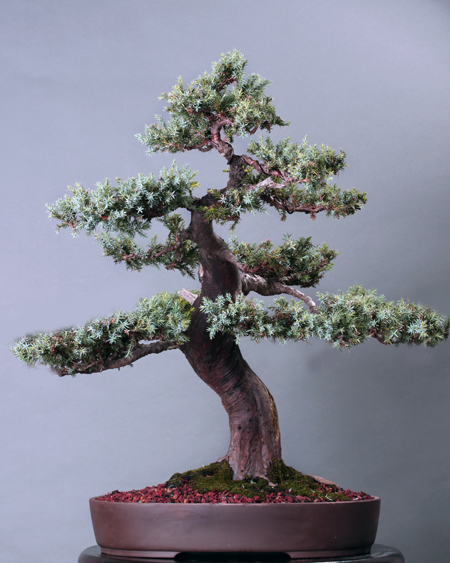
New Pot for Blue Alps Juniper
This tree still requires plenty of branch work, but it will come in time.

 Share on Facebook
Share on Facebook


















